Tired of paying big bucks for cable channels you never watch? Over 200 streaming services compete today in the U.S., offering affordable, easy-to-use options that can replace your costly cable box.
This guide explains, step by step, how to finally cut the cord and switch seamlessly to streaming TV—with no regrets. Read on for tips and tricks to stream smart and save money!
Key Takeaways
Cable TV usually costs around $200 each month—but switching to streaming can save you about $900 each year, as most plans run from $7 to $20 monthly.
You’ll need steady internet at around $60-$100 per month, with speeds of at least 200 Mbps for couples, or about 500 Mbps for families streaming on several devices at once.
To watch local channels for free, grab an HD antenna priced between $20 and $150; for paid streaming, use devices like Roku ($38-$99) or Fire TV.
Popular paid streaming services include Sling TV for $40/month, YouTube TV at $73/month, and FuboTV—ideal for sports fans—at roughly $80/month.
Free, ad-based options like Pluto TV, Tubi, and Peacock provide thousands of movies and TV shows without any subscription charges.
Table of Contents
Assessing Your Needs
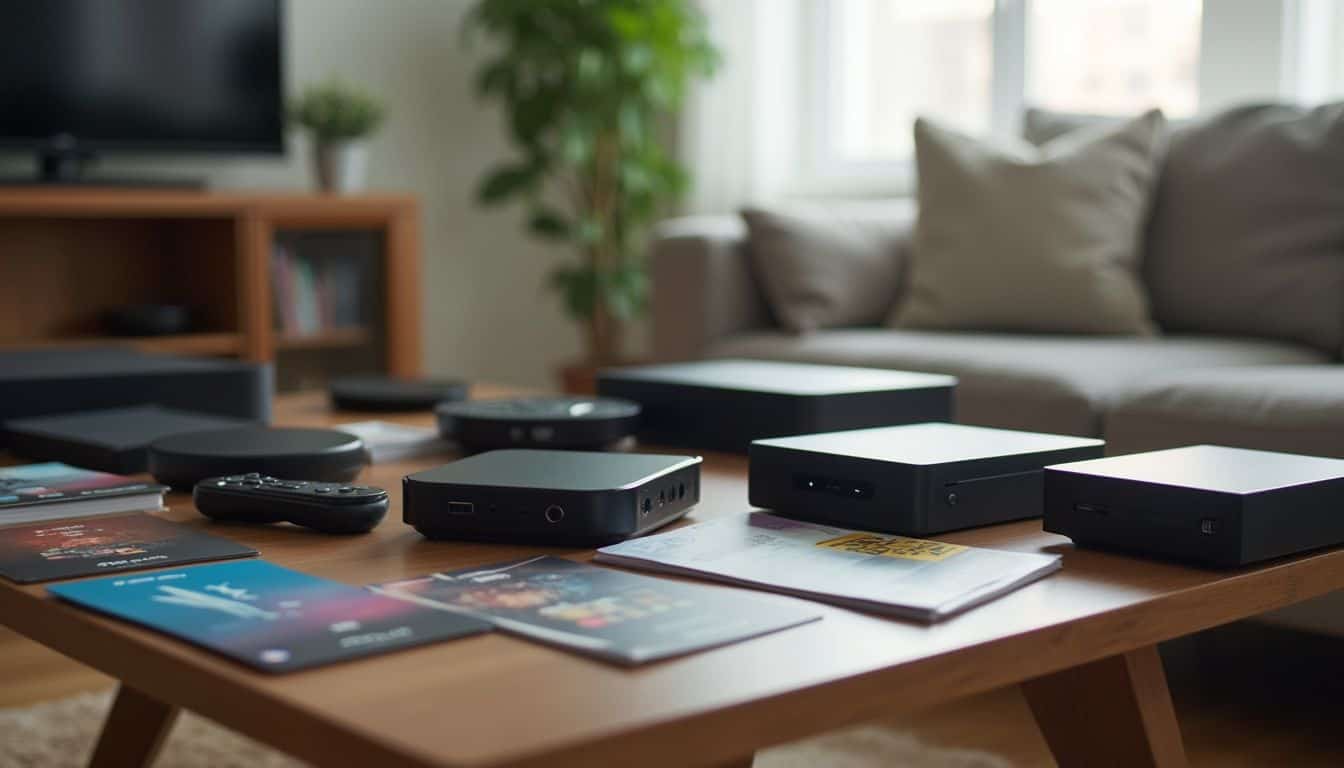
Smart cord-cutting starts with knowing what you really watch. You need to list your must-see shows and sports teams before you dump cable – this step saves you from signing up for too many streaming services later.
Identify must-have channels and shows

Jot down your favorite TV series and channels—the ones you absolutely can’t miss. I made this mistake myself after cutting cable last year and ended up missing my favorite sci-fi show on AMC Plus.
Your must-watch list might include things like local news channels, ESPN Plus for sports action, or services with exclusive shows like Disney Plus and Paramount Plus. Many viewers cut cable but still want easy access to Monday Night Football, Star Trek episodes, or Netflix’s exclusive series.
Pay attention to shows that show up on different platforms—this will keep you from wasting money on duplicate content. Your own TV preferences will make choosing the right streaming platforms easier in the next stage.
And if anime’s your thing, you can always watch free anime.
Determine your budget

Creating a clear budget gives you an early advantage in your cord-cutting journey. Cable TV in the U.S. usually costs around $200 a month—but streaming plans run between $7 and $20 monthly.
You’ll also need reliable internet, which typically goes for about $60 to $100 each month. To keep track of your spending, grab a notebook, and list all your favorite sports, channels, and must-watch shows.
Doing this helps avoid wasting cash on programs you’ll never watch.
The best cord-cutters plan their streaming budget like a tech upgrade—maximizing value while minimizing costs.
Most people cutting cable save about $75 per month. That’s around $900 each year in savings. To get started, you’ll need a smart TV or streaming device—like Roku or a Fire TV stick—which costs between $30 and $200, just once.
Your overall monthly bill will vary depending on how many streaming services you choose. Many tech-savvy viewers blend paid subscriptions with cost-free choices like Pluto TV or Amazon Freevee, creating a solid mix of viewing options without overspending.
Consider internet speed and data requirements
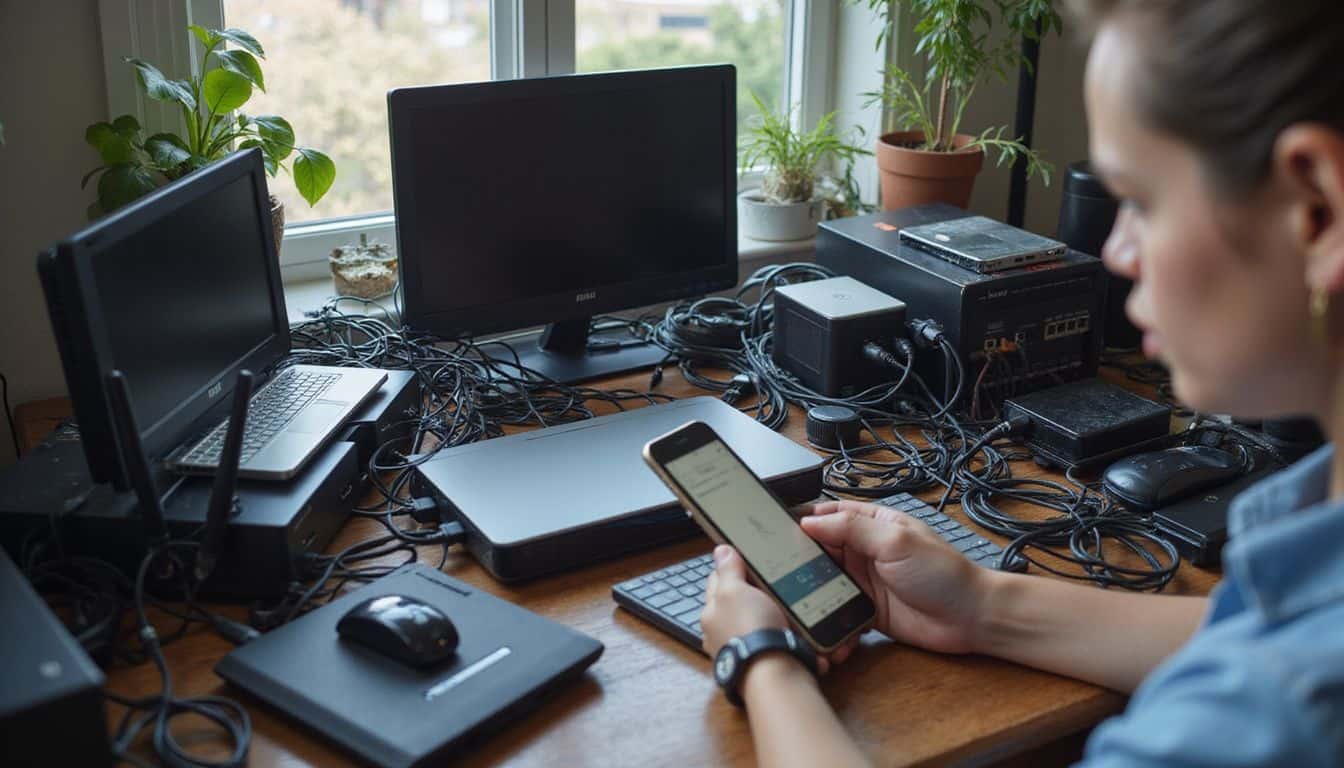
Your ideal internet speed depends mostly on how you stream. If your family often works from home, you’ll want at least 500 Mbps for running multiple devices smoothly. Couples who usually just stream shows or browse email can comfortably manage with around 200 Mbps.
Streaming platforms typically require between 5 and 25 Mbps per device to keep videos playing clearly without interruptions. Last year, I upgraded my own internet from a 100 Mbps connection to a 500 Mbps plan—and noticed a huge improvement right away.
No more annoying buffering, even during busy evening hours!
On the bright side, internet costs have steadily become easier on your wallet. Across the U.S., the typical monthly internet bill is now about $63, not including extra fees. Since 2022, several providers have started offering inexpensive plans with speeds of at least 100 Mbps.
With these cheaper, faster options available, ditching cable TV for streaming-only plans feels even more realistic for most households.
Equipment You’ll Need

The right gear makes cord-cutting simple and stress-free in 2025. You’ll need a few key devices to stream your favorite shows without cable.
Streaming devices: Roku, Fire TV, Apple TV, Chromecast
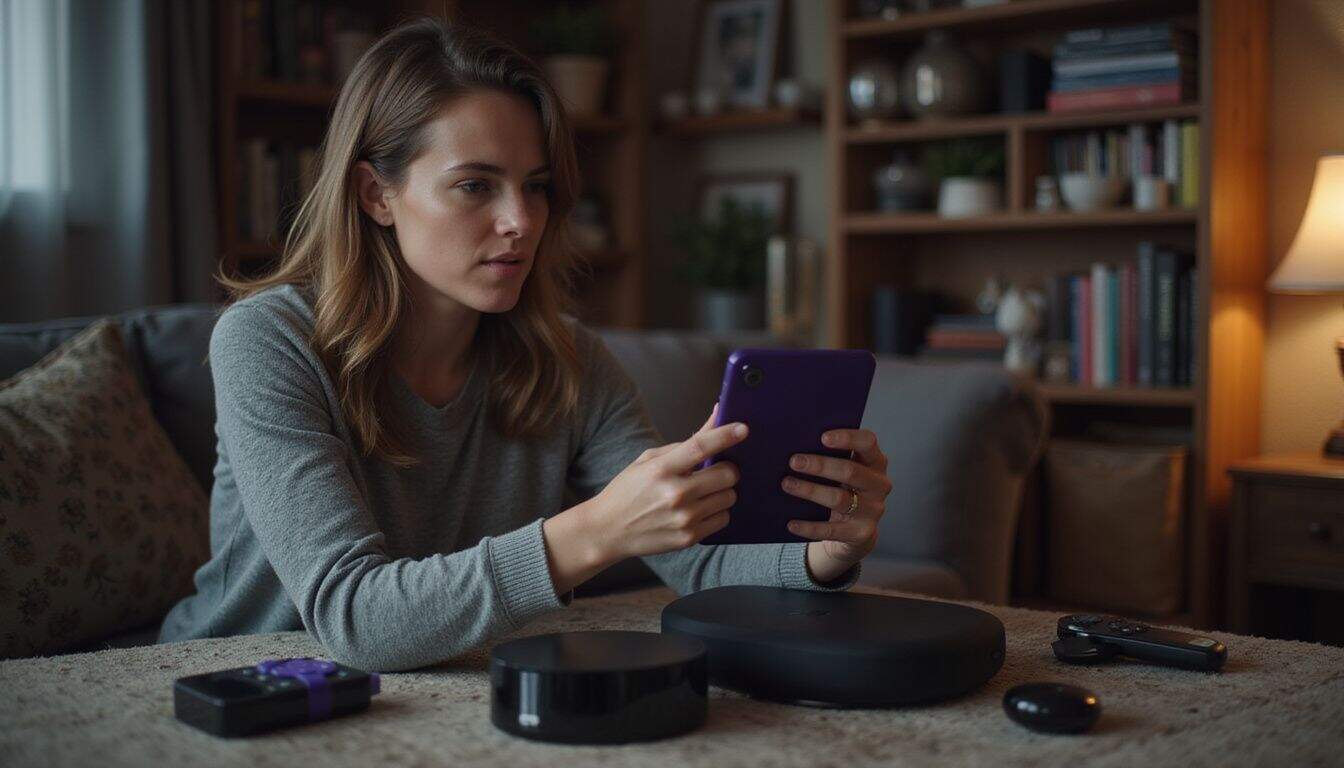 Streaming devices are key to a good cord-cutting setup. Roku provides solid options at various prices—with the Roku Streaming Stick 4K at just $38, and the high-end Roku Ultra at $99.99.
Streaming devices are key to a good cord-cutting setup. Roku provides solid options at various prices—with the Roku Streaming Stick 4K at just $38, and the high-end Roku Ultra at $99.99.
Both models easily handle popular streaming apps and connect smoothly to almost every TV. Amazon’s Amazon Fire Stick 4K Max smoothly integrates Prime Video content, and it even provides Alexa voice controls, ideal if you enjoy smart home features.
https://www.youtube.com/watch?v=sKjmcYX6SZc
While I’ve noticed Fire TV tends to strongly highlight Amazon shows, its voice search helps locate content quickly across various apps.
The right streaming device can make or break your cord-cutting experience.
Google Chromecast with Google TV supports Dolby Vision and doubles effectively as a hub for smart home devices. Many iPhone users prefer Apple TV due to its neat interface and easy integration with other Apple products.
Each streaming player comes with unique advantages: Roku offers straightforward simplicity, Fire TV stands out for Alexa integration, Chromecast pairs nicely with Google Home, and Apple TV appeals with its premium design.
Choosing one depends on your favorite streaming services and smart-home compatibility.
Smart TVs and gaming consoles
Smart TVs dominate today’s market—around 80% of televisions sold in the last five years offer built-in internet capability. Most arrive with popular streaming apps, like Netflix, Hulu, and Disney+, installed and ready for use.
And that’s great news for cord-cutters, since you don’t need any extra boxes or adapters. Your TV easily hooks up to your home Wi-Fi, which lets you immediately stream your favorite shows and movies.
Many smart TV models even respond to voice commands using Amazon Alexa or Google Assistant. So, simply say the name of your favorite show—no typing required.
Gaming systems can also handle streaming duties with ease. Consoles like Xbox Series X, PlayStation 5, and Nintendo Switch have major apps for streaming built-in, often supporting ultra-clear 4K HDR content.
Gamers especially appreciate keeping everything in one place: one single device for movies and gaming. Latest versions of Xbox and PlayStation even offer dedicated media remotes, giving you an easier way to browse than using standard controllers.
Plus, consoles let users surf the internet or enjoy their favorite music through apps such as Spotify. If you’re a tech fan looking for improved audio, just pair your console with wireless headphones.
You’ll create your own private listening space without bothering anyone around you.
Antennas for local channels
HD antennas give you easy access to free local channels, with no monthly bills involved. Typically costing between $20 and $150, they’re affordable options for anyone ditching cable TV.
Today’s antennas often feature 360° signal reception, making it easy to catch broadcasts from every direction nearby. I set mine up a month ago—now I watch ABC, CBS, NBC, and PBS in sharp, crisp quality without spending a cent.
Tech enthusiasts often ignore antennas, thinking of them as outdated—but modern units actually earn impressive ratings, averaging 3.9 out of 5 stars from 195 satisfied users. Broadcast signals also tend to offer better picture quality since they face fewer compression issues compared to cable or satellite feeds.
You can mount an antenna on a wall, by a window, or up in your attic, depending on your home layout and local signals. For ideal performance, place your antenna close to windows that face local broadcast towers.
Choosing the Right Streaming Services
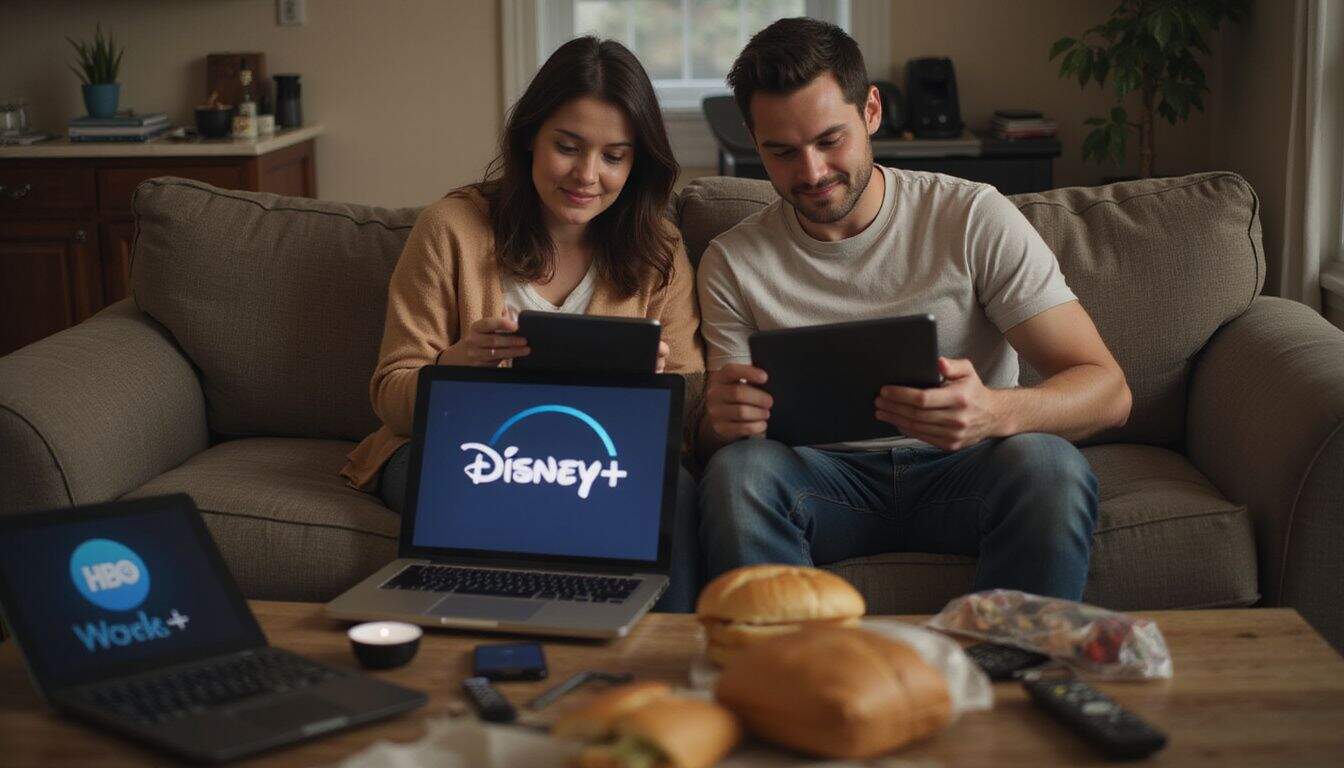
Finding the best streaming mix comes down to what shows you love, how much you’ll spend, and which services match your needs – read on to learn how YouTube TV, Disney+, and HBO Max stack up against each other, plus tips to avoid paying for stuff you’ll never watch.
Live TV streaming services
Live TV streaming services let you enjoy cable channels without those painful bills and equipment rental fees. Sling TV offers the cheapest entry point at around $40 per month, but adding more channels raises the price.
YouTube TV hits the middle mark at $73 monthly, giving you a broad channel selection at a decent value. Sports lovers might prefer FuboTV because it packs extensive sports programming, priced at $80 per month.
Hulu with Live TV charges $76 monthly and gives you their entire on-demand library, making it a tempting pick for binge-watchers. Every one of these options runs smoothly on popular streaming hardware like Roku, Apple TV, and Fire TV sticks.
Cutting the cord isn’t about giving up TV—it’s about taking control of what you watch and how much you pay for it.
On top of live channels, these streaming providers often include perks that cable companies normally charge extra fees for—like cloud DVR storage to record favorite shows. Most services offer a free trial period, so you can test-drive them before paying.
Choosing the best option largely depends on channel preferences and viewing habits. Sports fans, for example, often lean toward FuboTV for its regional sports coverage, while budget-conscious viewers might choose Sling TV’s smaller custom packages.
A good viewing experience also depends heavily on your internet speed—so fast, stable internet truly makes a difference.
Major standalone streaming platforms
Netflix stands out with streaming plans suited for every budget and need. Their lowest rate—only $6.99 per month—includes ads to keep things affordable. The Premium plan raises quality to Ultra HD and adds four simultaneous streams at $22.99 monthly.
MAX delivers HBO’s huge library, pricing it at $9.99 per month if you don’t mind ads. Amazon Prime Video can be yours through a full Prime membership for $14.99 per month or as a separate service at $8.99 monthly.
Each platform presents original, unique series made to suit various tastes.
These big services form the core of many cord-cutting plans. Disney+ now also competes actively, offering an enormous library of Marvel films, Star Wars adventures, and classic Disney shows.
Many viewers mix services, choosing what’s best based on their favorite series or movies. The Disney Bundle even groups several services into one convenient deal to save money compared with subscribing individually.
Clever viewers rotate their streaming services throughout the year, signing up for a month or two at a time, catching top shows while saving cash—without subscribing to everything simultaneously.
Niche and specialty streaming options
Geeks have plenty of streaming choices beyond the big, mainstream apps. Anime lovers can easily find great shows on Crunchyroll—thousands of titles are available on its free plan.
For film enthusiasts, Criterion Channel offers classic and art house cinema at $10.99 per month, including unique films that mainstream sites rarely show. Horror lovers can enjoy Shudder, a streaming service dedicated entirely to scary movies and creepy shows.
Fans of Korean dramas have great picks such as Viki and Kocowa, offering a wide range of popular series. AMC Plus streams intriguing shows like “The Walking Dead”, costing just $4.99 monthly with ads or $8.99 for ad-free viewing.
Theater fans can stream Broadway hits from home through BroadwayHD, priced at $19.99 monthly or $199.99 annually for a discount.
Free streaming services offer plenty of entertainment without touching your budget. Tubi provides hundreds of TV shows and movies—all free—supported by brief commercials. Pluto TV offers live streaming on over 250 channels, from news to comedy and reality shows.
Crackle, owned by Sony, is another option offering a good selection of films and series, completely for free. Peacock’s free tier includes TV shows, movies, sports, and news—all without payments or subscriptions.
Freevee, previously IMDB TV, is Amazon’s ad-supported service, providing users plenty of movies and popular series without cost.
Free Streaming Options

You can stream tons of shows and movies without spending a dime in 2025. Free services like Tubi, Pluto TV, and Peacock offer huge libraries that rival paid streamers, minus the monthly bills.
Platforms offering free content
Free streaming is now a huge player for people who’ve ditched cable. Pluto TV shines with more than 100 free channels, offering classics, news, and sports—all without ever charging a monthly fee.
Last year I moved to Tubi and instantly got access to over 60,000 movie and show titles, some with fresh original programming that can hold its own against what paid services offer.
Then there’s The Roku Channel, available even without owning a Roku streaming device. They’ve recently introduced original shows too, directly competing against Netflix’s popular series.
Amazon Freevee—formerly IMDb TV—gives viewers tons of ad-supported movies and shows, perfect for filling that void after cable cancellation.
These free streaming platforms provide easy access to entertainment without locking anyone into an expensive cable contract. Many of them now even offer convenient DVR-like features, helping viewers keep favorite shows handy after cutting cable ties.
Of course, ad-supported streaming means adjusting viewing patterns a little, but that’s a small price for saving significant money every month.
Ad-supported streaming services
Ad-supported streaming offers loads of entertainment without hitting your wallet too hard. Big-name platforms are quickly switching over to this format—and viewers are loving it.
Peacock currently takes the lead, with an impressive 84% of subscribers choosing their cheaper, ad-friendly option. Hulu predicts that by 2025, around 65% of its users will be tuning in with commercials.
Disney+ also expects about 40% of subscribers to pick their lower-cost ad-supported plan. Even Netflix—the big streaming giant that used to steer clear of ads—will probably have about 15% of viewers accepting commercials by 2025.
Paramount+ trails closely behind, anticipating around 58% of its viewers will stick to ad-supported memberships. These services feel like old-school TV, but with shorter, personalized ads that actually match your interests.
If you’re a tech fan looking to save a little cash, ad-supported plans are pretty tempting. You trade just a few minutes of commercials in exchange for hefty monthly savings—usually between $5 and $10 off the regular price.
The streaming quality stays exactly the same, including HD, 4K, and HDR, wherever offered. Many viewers even enjoy shorter breaks and fewer ads per hour compared to regular cable TV.
Several platforms—like Peacock and Paramount+—also provide exclusive shows specifically available to viewers on the ad-supported tier. There’s also a bonus for your mental health: ad breaks naturally pace viewing, helping your mind reset and reducing endless binge-watching sessions.
Replacing Cable Features
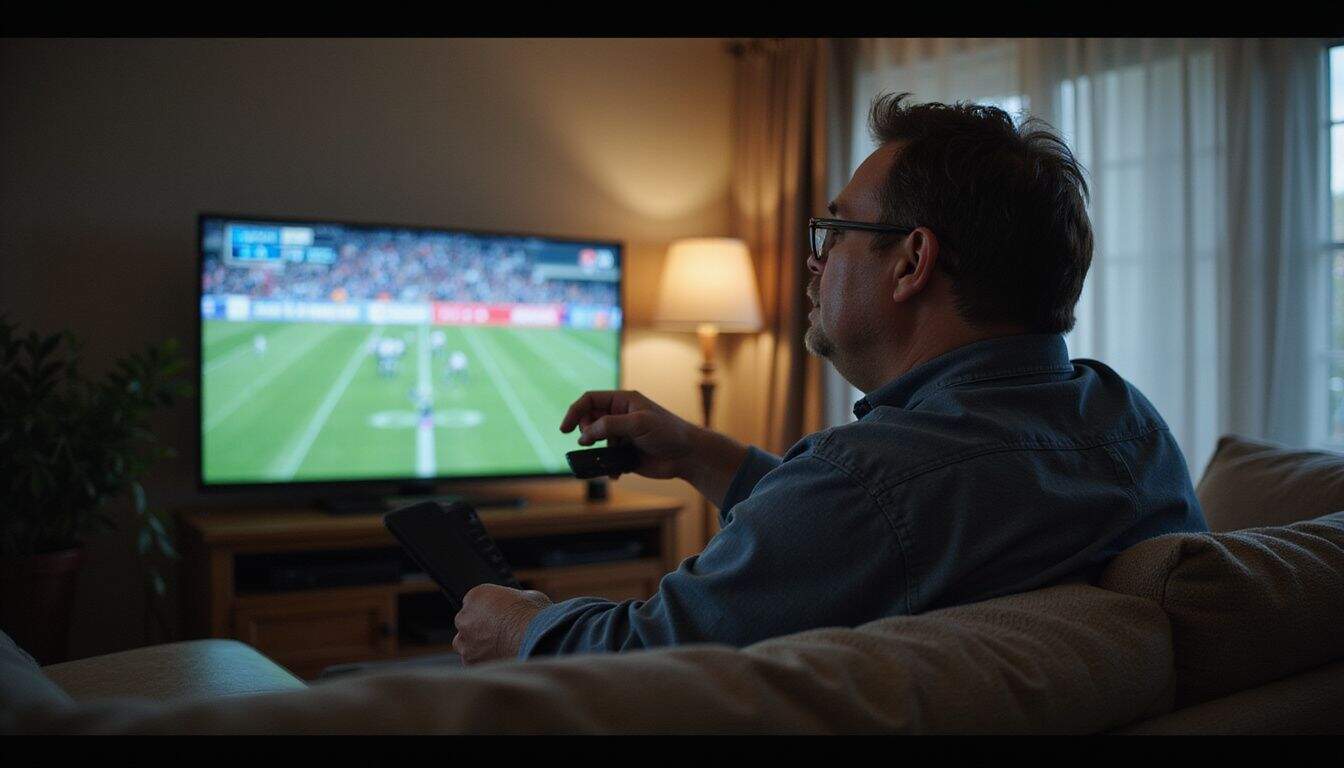
Cutting the cord doesn’t mean giving up your favorite cable features. You can still record shows, pause live TV, and catch every sports game with the right digital tools.
DVR alternatives for recording shows
Missing favorite shows is now a thing of the past—thanks to new DVR technologies. The Nuvyyo Tablo 4th Gen is perfect for cord-cutters, providing 50 hours of built-in storage and quick access to FAST channels.
This handy device lets you record free, over-the-air broadcasts without any monthly fee. For Sling TV users, the AirTV 2 is another strong choice, although you’ll need an external hard drive to store programs.
Smart buyers should choose DVR models with ATSC 3.0 compatibility. This latest TV broadcast standard helps protect your setup as technology advances. Popular brands, like TiVo and streaming-based DVR systems, also provide cloud-storage options that work smoothly with services such as Disney+ and Netflix originals.
Many of these devices let you easily skip commercials, and you can enjoy your recorded programs across multiple screens around your home.
Options for live sports streaming
Sports fans don’t need to stress about missing games after cutting cable. DirecTV Stream stands out for sports coverage, offering a wide range of options at around $87 a month. For hardcore fans who want regional sports networks (RSNs), premium plans go up to $115 or even $130 monthly.
If saving money matters most, Sling TV Blue delivers fewer channels—but at just $46 per month, it stays affordable. YouTube TV and Hulu Plus Live TV offer a strong middle option, each priced at roughly $83 a month, with plenty of sports channels.
NFL RedZone availability differs from one service to another—double-check the details before you sign up. Your chosen service should match the teams you love and your budget limits, too.
Many streaming plans now feature DVRs, giving you flexibility to record and watch games later on your own time. Savvy viewers often grab free trials during the off-season, trying a few out in advance to see what fits best once the action starts.
Steps to Cancel Your Cable Service

Breaking up with your cable company doesn’t need to be scary. We’ll guide you through checking your contract for fees, telling your provider goodbye, and sending back their boxes without stress.
Review contract and cancellation fees
Cable contracts can hide some expensive surprises, even for tech-savvy folks. Early termination fees in agreements from providers like Xfinity or DirecTV can quickly drain your wallet.
I learned this lesson the hard way, paying $240 for ending my service just three months early—ouch! Checking your billing cycle timing matters too, since the date you cancel directly impacts when charges finally stop.
Most cable companies need at least 30 days’ notice before they’ll officially close your account. Miss that cutoff, and you’ll end up paying for an extra month of unwanted service. Providers rarely volunteer these details openly, so dig out your contract and review all of the fine print.
And if anything about cancellation terms seems fuzzy, pick up the phone and call customer service directly for exact numbers and clear answers.
Notify your cable provider
Reaching out to your cable provider can feel stressful—but it’s an essential move toward cutting the cord. Most cable companies try enticing customers to stay by offering exclusive discounts once you mention leaving.
While you’re on the call, jot down details about final statements and equipment return deadlines. Also, look at your contract beforehand—you don’t want any unexpected fees for ending service early.
These quick checks help your move to streaming stay easy and worry-free.
Internet and cable TV often come from the same provider, so clearly say you only want to cancel the TV part. Some tech fans notice companies like ViacomCBS and DirecTV become more flexible on price after mentioning cancellation.
After calling, promptly return rented cable boxes and other provider-owned devices to prevent extra fees.
Return rented equipment
Cable companies will charge you extra fees if you don’t return your gear. You need to send back cable boxes, DVR units, and modems to avoid these costly penalties. Most cable providers ask customers to return equipment within 10–14 days after canceling their service.
You can either drop off items at local stores or mail them back using the shipping labels provided by the company. Before returning, take clear pictures of each device along with its serial number.
Always request a receipt as proof that you’ve returned everything—this helps protect you if the company later claims something went missing. Tech-savvy users agree these simple precautions make cutting cable smoother.
If you’re keeping your internet, the connection remains active during this period.
Be sure to erase any personal data from DVRs, since these could store information on your viewing habits and settings. Long-term cable customers often feel a bit sentimental after turning in equipment they’ve used for a while—that feeling is normal and tends to pass quickly.
DirecTV, Starz, and many other providers have their own unique return procedures, so double-check the steps each one requires. Smart users make a quick checklist for every device involved, marking items off once returned—saving themselves from future billing headaches.
Tips for a Smooth Transition

Switching from cable to streaming needs a smart plan for the best results. You can make your cord-cutting journey smooth by testing services first, finding the right bundles, and giving yourself time to adjust to new viewing habits.
Test streaming services before canceling cable
Give streaming services a test run while you still have cable—it’s a smart move. Popular platforms like Disney+ and HBO usually provide trial periods lasting anywhere from 7 to 30 days.
This way, you can see if the service fits your needs before committing to monthly fees. Use these trials to check video quality on your existing internet connection, and confirm your favorite series are actually available there.
Tech-savvy viewers might even enjoy verifying each service’s compatibility with their streaming devices.
Reliable internet speed is key to a smooth streaming experience. Live TV streaming services like Sling TV (about $40 a month) or Fubo TV (around $80 monthly) offer convenient sign-up and can effectively replace traditional cable packages.
You can also explore completely free alternatives—Pluto TV and Tubi both deliver lots of entertaining content without costing a dime. Trying out different platforms first protects you from frustration or disappointment down the line—you’ll already know exactly how your new streaming arrangement feels.
Bundle streaming services for savings
Savvy streamers love bundling services—it cuts down monthly bills without shrinking content choices. Disney+, Hulu, and Max bundle their platforms for only $16.99 per month with ads, giving you way more shows for less money than subscribing to each separately.
Amazon Prime Video comes included in Amazon’s Prime membership for $14.99 a month, along with free shipping, special deals, and extra perks. Walmart shoppers can grab a Walmart+ membership at $12.95 per month, which packs in Paramount+ streaming access as well as shopping discounts and benefits.
Bundled packages let you escape the frustrating cycle of high cable bills, while keeping your favorite entertainment options handy. You won’t feel stuck paying extra for channels you never watch.
Behind the scenes, bundling is simple—companies want your business, and you want lower bills. It’s a friendly arrangement, providing the shows you crave and leaving more cash in your wallet.
Adjust to new viewing habits
Bundling your streaming services can lower your costs—but it will also change the way you watch TV. At first, your new streaming setup might feel strange compared to traditional cable.
Even tech enthusiasts often need time adjusting from scheduled cable shows to on-demand streaming. You might miss simple channel-flipping, yet streaming offers greater control over your viewing habits.
As you adjust, your viewing style will gradually change on its own. Let go of old unhealthy viewing habits, like binge-watching shows out of boredom or habit. Content from Netflix Originals or Disney+ is different from DirecTV’s traditional scheduled broadcasts.
Arrange your streaming apps in a way that’s comfortable and intuitive for you. This simple change in daily viewing routines can give you over $1,200 in annual savings—with greater freedom to watch your favorite shows whenever you want.
How Will Cutting the Cable Cord Evolve in 2025?
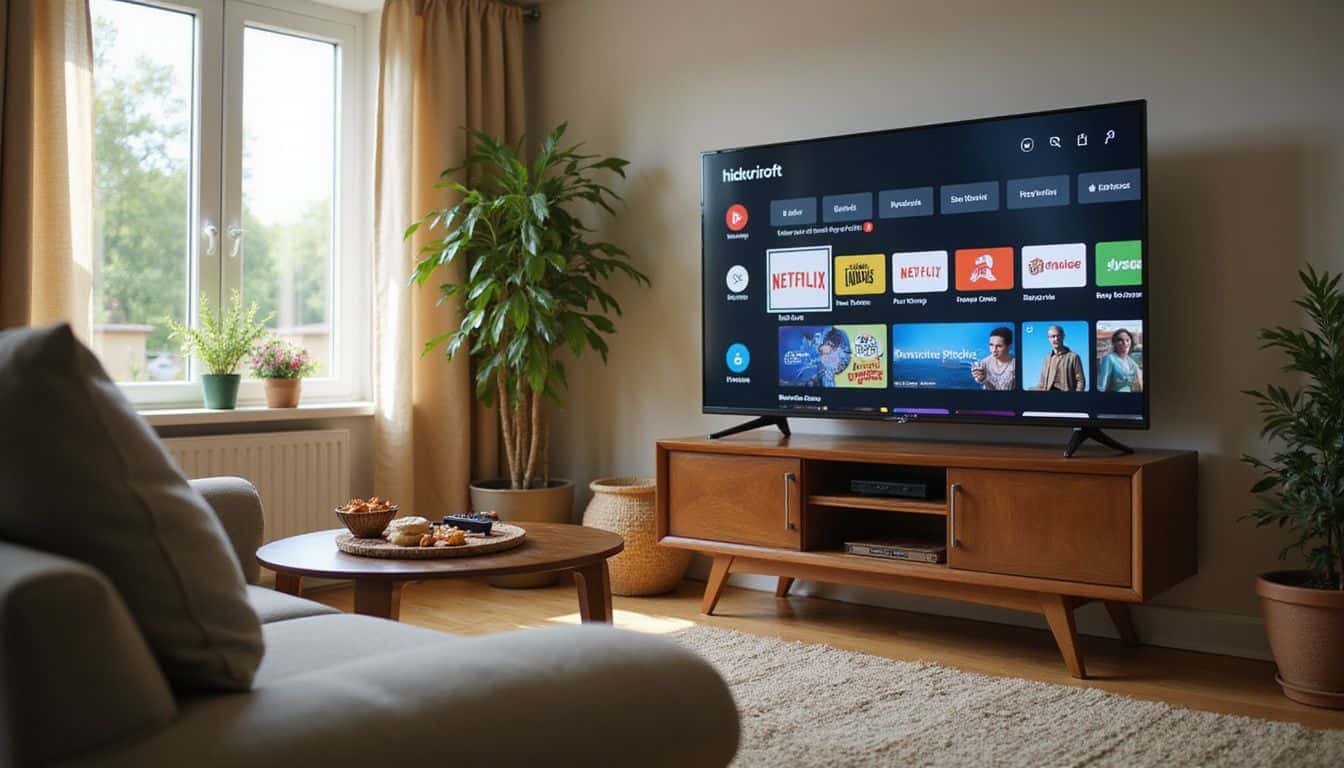
Cable-free living will get even sweeter in 2025—even if streaming prices creep upward. Most folks pay around $147 per month for cable TV these days, so going the streaming route could put a lot back into your pocket.
Smart viewers often switch services each month, choosing subscriptions based on shows they plan to see. Last year, I signed onto Netflix in January to enjoy their original shows, then moved to Disney+ in February—and saved more than $300 doing so.
Big savings have arrived in the form of new, cheaper plans supported by ads, offering an experience similar to traditional cable but without the huge costs. These budget-friendly options will feel familiar, especially if you’ve recently ditched cable.
Many platforms now have these less expensive, ad-supported plans, so you can still enjoy your favorite shows without an inflated monthly bill.
People Also Ask
What are the health benefits of cutting the cord?
Dropping cable TV can lower stress and boost your emotional health. Reducing screen time helps break unhealthy ties with shows that fuel negative feelings or painful memories. Stepping away from constant TV watching can also support personal growth—and even curb binge eating triggered by lounging in front of the screen.
How can I still watch my favorite shows on Netflix and HBO without cable?
You can stream popular shows from Netflix and HBO by using their streaming apps. Simply subscribe directly to the services you love, such as Disney+ or Showtime, and start watching right from your smart TV, phone, or tablet.
Will I really save money by switching to streaming?
Yes, cutting cable typically leads to significant savings. Many people end up paying far less when they ditch costly cable or satellite plans. Paying only for what you actually watch—rather than hundreds of unwatched channels—quickly adds to your savings.
Is cutting the cord just a placebo effect for saving money?
Nope, the savings are definitely real—not imaginary. Most folks cut their TV bill by around half or more after switching over to streaming. Your budget will reflect the change clearly.
How can I deal with feelings of loss after cutting cable?
It’s common to feel a bit strange or unsettled right after canceling cable TV. Try filling your extra free time with activities that nourish personal growth, spirituality, or learning a new skill. Be mindful about changing your relationship with TV itself, and consider exploring psychology or energy healing practices if you need help shifting your mindset about entertainment.
References
https://alpl.librarymarket.com/sites/default/files/2024-12/2025%20Streaming%20Cutting%20the%20Cord%20%20.pdf (2024-12-17)
https://www.ign.com/articles/how-to-cut-down-your-monthly-streaming-subscription-bill
https://www.wired.com/gallery/best-4k-streaming-devices/
https://www.cnet.com/tech/home-entertainment/best-streaming-device/
https://www.engadget.com/entertainment/streaming/best-live-tv-streaming-service-133000410.html
https://www.amazon.com/TV-Antenna-Indoor%EF%BC%8CDigital-Supports-Channels/dp/B0D3Z4RMF8
https://www.amazon.com/Antenna-Channels-Outdoor-Indoor-Supports/dp/B0DNRZQLC3
https://www.pcmag.com/picks/the-best-live-tv-streaming-services
https://www.pcmag.com/picks/the-best-video-streaming-services
https://www.techradar.com/best/best-tv-streaming-service-cord-cutting-compare
https://www.cnet.com/tech/services-and-software/best-streaming-service/
https://www.cnet.com/tech/services-and-software/how-to-cut-the-cord/ (2025-01-11)
https://research.mountain.com/insights/ad-supported-streaming-will-continue-growing-in-2025/
https://www.cnet.com/tech/home-entertainment/best-ota-dvr-for-cord-cutters/
https://www.cnet.com/tech/services-and-software/best-live-tv-streaming-service-for-cord-cutters/ (2025-03-24)
https://michaelsaves.com/streaming/how-to-cut-the-cord/
https://www.cabletv.com/blog/how-to-cut-the-cord
https://www.tomsguide.com/entertainment/streaming/cord-cutting-guide (2024-09-19)
https://www.techlicious.com/tip/cutting-the-cable-cord-a-step-by-step-guide-to-switching-to-streaming/ (2023-09-25)
https://www.ign.com/articles/best-streaming-bundle-packages (2025-03-31)
https://cordcuttersnews.com/cord-cutting-in-2025-how-to-save-big-despite-rising-costs/ (2025-03-15)
https://seniorsbluebook.com/articles/embracing-change-cutting-the-cord-and-streaming-into-the-future (2024-08-15)
